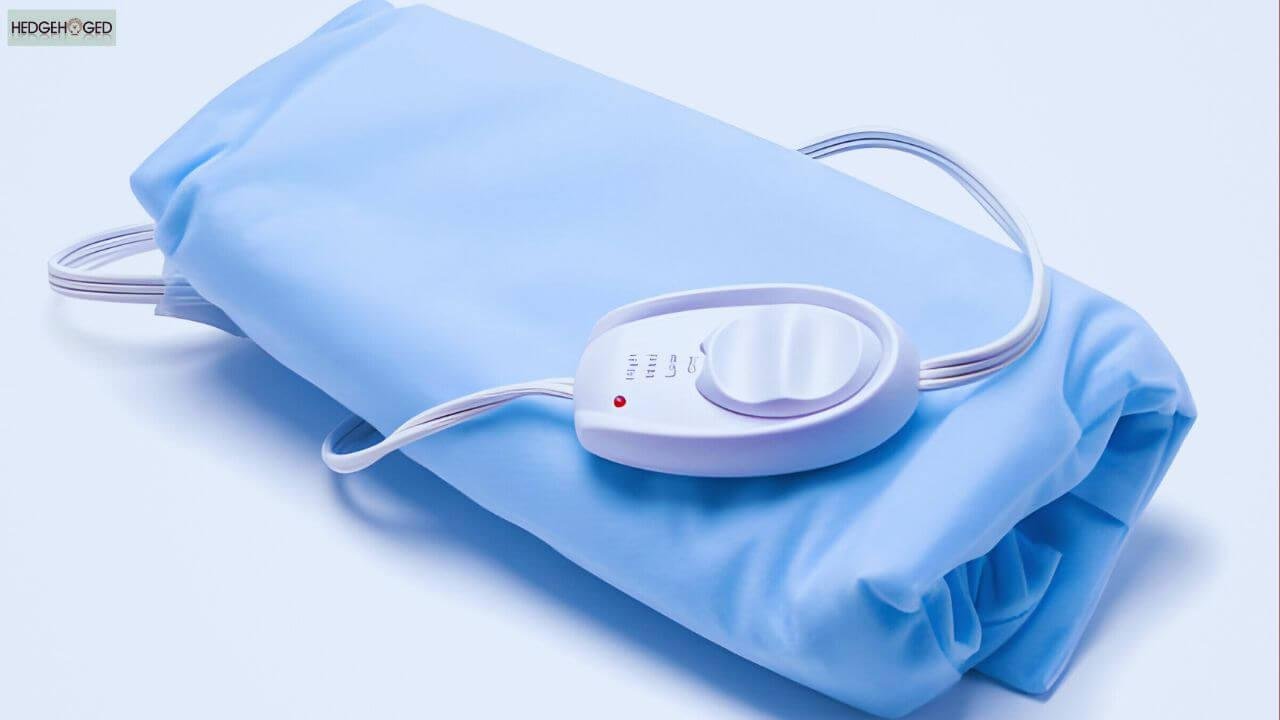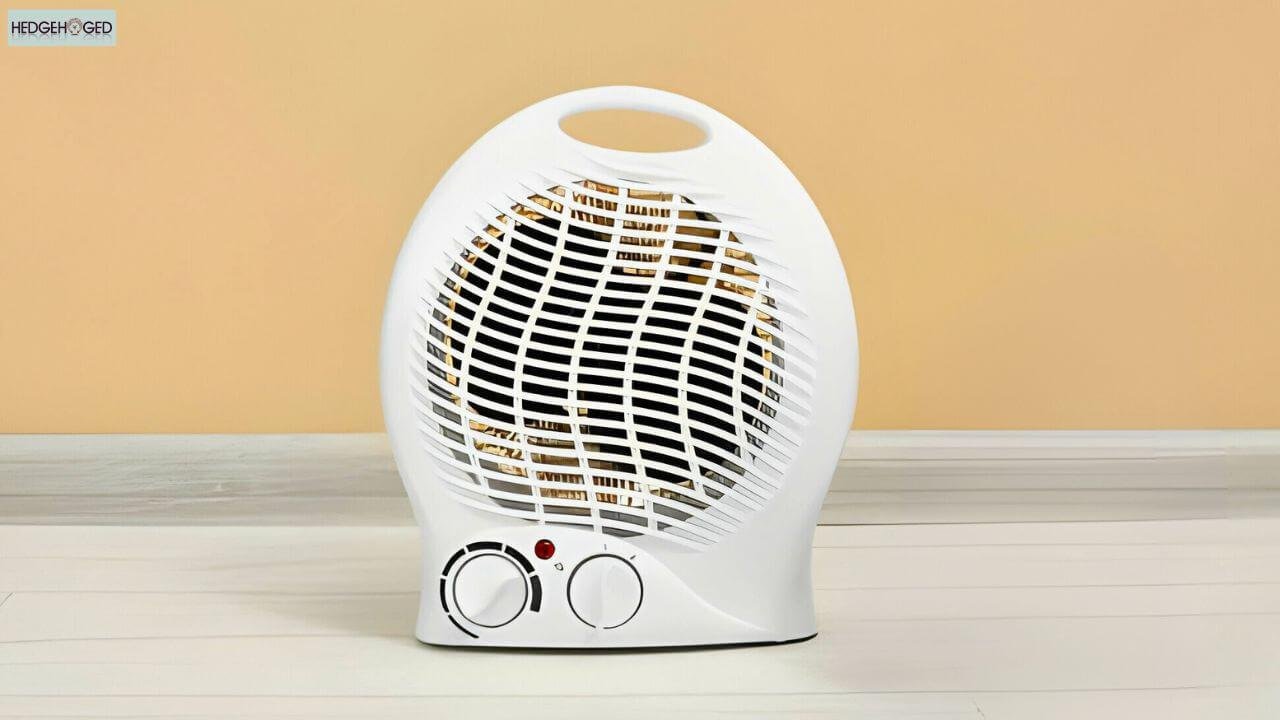If you have a hedgehog, it might be challenging to regulate a hedgehog’s temperature and keep them comfortable and happy in North American conditions, as nearly all hedgehog species seen in the United States are native to Africa. Nevertheless, owning a hedgehog can be a lot of fun.
Please maintain the hedgehog’s temperature under control at all times. It is critical to keep a hedgehog cage temperature between 72F (22C) and 80F (26.5C), since anything lower than this may lead them to become sluggish and perhaps enter hibernation, while anything higher may cause them to enter aestivation (heatstroke). In this article, we’ll focus on how to control hedgehog temperature in winter.
Use a Thermometer in the Cage for Hedgehog Temperature
To ensure the right temperature, use a thermometer put within the cage rather than relying on any sort of temperature reading from outside the cage.
Our central heating includes a screen that displays the average temperature in our house, which is always lower than the thermometer in the hedgehog’s cage. It is critical to have some type of dependable temperature monitoring from the cage, which is why we rely on the readings from the thermometer attached to the interior of the cage.
Any equipment used to measure the temperature within your hedgehog’s cage must be safe for them, preventing injury and protecting them from chewing on any cords. The last thing anyone wants is for a pet hedgehog to get electrocuted while eating a wire.
Know the Ideal Temperature
Hedgehogs thrive in temperatures ranging from 72F (22C) to 80F (26.5C). It is critical to keep this temperature in the places where they sleep and, if possible, eat and play. Keeping the entire cage at this temperature may not be a possibility, and doing so would need us to either turn on our central heating constantly throughout the winter months or buy a low-cost space heater.
The space heater option is best suited to tiny spaces, and our hedgehog lives in a bigger room where a space heater would be ineffective.
We attempt to keep the room temperature for hedgehogs at a minimum of 64F (18C), never exceeding 82F (28C), to ensure that it is warm enough for the hedgehog to come out at night. We’re fortunate to have decent insulation that helps keep the heat that accumulates during the day, as well as windows that can be readily opened to cool the home down.
Air conditioning isn’t ideal for hedgehogs since it lowers the total temperature not just during the day but also at night, even when the air conditioning is turned off.
The recommended hedgehog temperature range for a hedgehog is slightly greater than what most Americans find comfortable. We prefer to run our air conditioners in the summer because it’s too hot, and the high cost of gasoline and energy in the winter makes things too pricey.
But, you may try adjusting your thermostat to 73–78 degrees F, or as near as you can, as the first step in making your pet more comfortable. Then, you can attempt to make up the difference using the following techniques.
Eliminate Drafts
Many people in the United States squander a lot of money every year by failing to adequately seal their homes for the winter. It lets chilly breezes enter the home, making you feel cold even with a higher temperature. These drafts might put your hedgehog’s life at risk.
As a result, we propose applying a window insulator kit to any windows in the room with your pet. To maintain an equal, stable, and warm temperature in your pet’s room, keep the door closed and utilize a door draft protractor.
Heat their Feeding Area
When hedgehogs awaken in the dark, they will leave their home in quest of food, which within a cage means going to where the food and water are kept. We have a running wheel close to where the food and water are kept; our hedgehog uses it heavily at night as he wanders for hours.
When the overall temperature in the home drops, it is critical that some sort of heating be present in this location since the temperature in the cage will drop as well. This becomes more significant as the hedgehog grows older, as they’ll find the cold more painful, similar to how we people find the cold bothersome.
Hedgehogs will just not come out for extended periods if the temperature in their eating and play areas is low. They will just come out, eat fast, and then return to their cozy home. Lack of activity causes the hedgehog to become obese, which is bad for their general health.
Some cages let you utilize a ceramic heat emitter, often known as a heat lamp, to offer extra heat in the cage’s feeding and playing areas. However, because we have a Zoo Zone plastic bottom cage, this poses a fire threat, therefore we are considering purchasing another heat pad to place in the feeding and playing area.
Heating Lamps
Heat lamps are a wonderful option for heating a cage, but make sure they don’t produce any light and that the cage you’re using is appropriate.
You do not want a heat bulb that generates light since it may deter the hedgehog from coming out at night to feed because they would believe it is still daytime, confusing their body clock. To keep the cage warm, choose a ceramic heat emitter that emits infrared rather than light.
As I mentioned earlier, using a heat lamp with a plastic cage is not recommended due to the risk of fire. Instead, we use a heating pad with a fabric cover, setting it on a thick fabric liner to prevent direct contact with any plastic. When using a hedgehog heat lamp, there’s a potential risk of heat diffusion over a broader area, posing a threat to the plastic sides of the cage.
Ceramic heat emitters that exclusively produce infrared are a suitable choice for a heat lamp since they offer enough warmth and are reasonably inexpensive to operate.
Heating Pads
Heating pads are an excellent method to keep pets warm without raising the temperature inside your home. Thanksgiving pads are reasonably priced, simple to use, and safe as long as you don’t set them too high.
There are various brands available, and you may select any of them, but we recommend reptile heating pads since they are less filthy and typically waterproof. The disadvantage with heating pads is that you rarely know the precise temperature, and they’re not highly adjustable.
Before you buy a heating pad, ensure that it has:
- A replaceable cover, which not only has to be cleaned but also protects the hat pad’s bare metal;
- A thermostat to manage the temperature so that it only comes when it’s cold, below 72F (22C), and turns off when it’s hot, above 80F (26.5C);
- The cage has a thermometer and cable shielding to prevent gnawing by hedgehogs.
It is also critical that the heat mat, as well as any other heat-generating gadget, be plugged into a surge-protected electrical outlet. This prevents any electrical surges from overheating the heat appliance and perhaps harming the hedgehog, while also guarding against any consequent fire risk.
Use the Right Bedding
Bedding can help hedgehogs stay warm in their cages. We utilize cloth liners, which are more successful at keeping hedgehogs warm than liners that do not absorb well. You don’t want regions of the cage to have stagnant pools of cold pee or even water since they tend to spill water while drinking.
A bedding consisting of paper and straw will not provide enough barrier against the cold of the cage floor. The cage’s plastic flooring might get cold, but the cloth lining keeps our hedgehog warm.
We also have a fabric-lined purse and tunnel. The fabric-based tunnel is positioned next to the heat mat, so if it becomes too hot in the house, our hedgehog may come out of his house and walk into his fabric-lined tunnel to cool down, or just stay outside his house but still underneath the fleece covering his house.
Watch out for Hibernation
Cold can cause a hedgehog to hibernate since they have evolved to adapt to higher temperatures, especially when their original wild climate in Africa differs from the regions in which they are kept as pets.
Keep an eye out for any signs that your hedgehog may be about to hibernate and take urgent steps to attempt to prevent it. The following might well be symptoms of upcoming hibernation.
- Problems with curling up (look in their house frequently to see whether they’ve curled up to sleep).
- Uncurling issues (when they wake up, check to see if they uncurl).
- Problems standing up;
- Issues with standing and eating (does the individual consume their usual diet?).
- Behaving lethargically (moving slowly or not at all);
- It feels cold to the touch.
The best course of action for any hibernation indicators is to consult your veterinarian and get your hedgehog checked thoroughly. Most hedgehogs will perish if they go into hibernation, either from cold or starvation, because they will not have stored up any fat stores in preparation.
Watch out for Aestivation
Just as being too cold in the cage is harmful to hedgehogs, getting too hot may be as detrimental and possibly fatal. This is known as Aestivation (Estivation), and it is akin to a heat stroke, in which excessive heat creates health problems.
The following may indicate aestivation:
- Symptoms of splatting include low energy,
- lack of action
- a heated sensation.
In such cases, it is advisable to get them checked out by your veterinarian to ensure their health and to receive advice on how to effectively cope with such situations.
The heat from the cage can cause dehydration, therefore a sufficient supply of water is essential. Dehydration can cause not only survival issues but also skin problems including dry and cracked skin, which can lead to infections and suffering for the hedgehog.
Watch out for Fire Risks
As previously indicated, be cautious about the heater you pick, since it may constitute a fire danger. I’ve already noted the possible risk of employing heat lights with plastic cages; other concerns include warmers like space heaters, which may potentially pose a problem with plastic cages.
Remember that the majority of the heating given for any cage will be used unattended, which means you will most likely be asleep, at work, or otherwise occupied when the heating is turned on, therefore it is critical to ensure its safety.
The space where we house our hedgehog has a smoke alarm above it. We also occasionally set smoke alarms in other areas, such as the bedrooms, where we transfer the cage during late-night visits from guests.
Space Heaters
Space heaters are an excellent method to heat your pet’s room without heating the entire house. Space heaters are especially handy if your pet likes to move around and you want to give it plenty of time outside of its cage. There are numerous sorts available, and they typically perform similarly, with the amount of watts indicating how effectively it will heat.
The drawback of these heaters is that they can significantly increase your power cost after only a few uses. Space heaters may also be deadly if your pet gets too close, and they pose a greater fire risk than the others—so never use one.
FAQs
Q1. How long can a hedgehog survive without a heating pad?
If the temperature in their cage lowers, they can fast enter hibernation and starve to death in a matter of days. It is better to provide a consistent heat source, such as a heating pad or a heat lamp (ceramic heat emitter).
Q2. Do hedgehogs require a heat lamp?
Yes, you may use a heat lamp, but only if it emanates heat and not light. The light will keep your hedgehog away from the area heated by the heat lamp. Get a ceramic heat emitter lamp that only produces infrared heat, not light.
Q3. Can I put a heating pad on my hedgehog?
Yes, a high-quality heat mat with a removable fabric cover, as well as a temperature-controlling thermostat, is an excellent choice. If the temperature is too high, turn off the heat mat; if it is too low, turn it on.
Q4. what temperature do hedgehogs need?
The ideal temperature range for hedgehogs is 70 to 80 degrees. Keep the cage housing your hedgehog out of the direct sunshine, cold, and drafts.
Q5. Is 80 degrees too high for a hedgehog?
If the temperature rises beyond 80°F or 27°C, your hedgehog may have heat stroke.
Conclusion
As you can see, there are various steps you may take to keep your hedgehog temperature controlled. We propose buying a thermometer and closing the area to prevent drafts. If your pet likes to stay in the caves, heating lamps are ideal, while space heaters are ideal for pets who enjoy roaming and exercising.
Any of these strategies are effective, and many owners employ a mix. Don’t forget to plan for a power outage, since it may be one of the most perilous times in a hedgehog’s life.




